- News
- Reviews
- Bikes
- Accessories
- Accessories - misc
- Computer mounts
- Bags
- Bar ends
- Bike bags & cases
- Bottle cages
- Bottles
- Cameras
- Car racks
- Child seats
- Computers
- Glasses
- GPS units
- Helmets
- Lights - front
- Lights - rear
- Lights - sets
- Locks
- Mirrors
- Mudguards
- Racks
- Pumps & CO2 inflators
- Puncture kits
- Reflectives
- Smart watches
- Stands and racks
- Trailers
- Clothing
- Components
- Bar tape & grips
- Bottom brackets
- Brake & gear cables
- Brake & STI levers
- Brake pads & spares
- Brakes
- Cassettes & freewheels
- Chains
- Chainsets & chainrings
- Derailleurs - front
- Derailleurs - rear
- Forks
- Gear levers & shifters
- Groupsets
- Handlebars & extensions
- Headsets
- Hubs
- Inner tubes
- Pedals
- Quick releases & skewers
- Saddles
- Seatposts
- Stems
- Wheels
- Tyres
- Health, fitness and nutrition
- Tools and workshop
- Miscellaneous
- Tubeless valves
- Buyers Guides
- Features
- Forum
- Recommends
- Podcast
feature
8 reasons not to get disc brakes — find out the hassles before you switch
Disc brakes have become an increasingly important part of the road bike world over the past few years, but while the benefits of disc brakes are well documented, they bring with them challenges and problems too.
Here are some of the issues that we've experienced and heard about.
1 Disc brakes add weight
The all-up weight of a disc brake bike is higher than that of a rim brake bike.
Levers, brake callipers, hoses, fluid and rotors weigh more than an equivalent rim brake setup. Manufacturers often try to minimise the difference but don't forget that disc brake hubs are heavier too, and disc brake wheels are often built up with more spokes of a wider gauge, although the lack of a brake track means that disc-specific rims are generally lighter. The thru axles that are used with many disc systems are heavier than quick release skewers.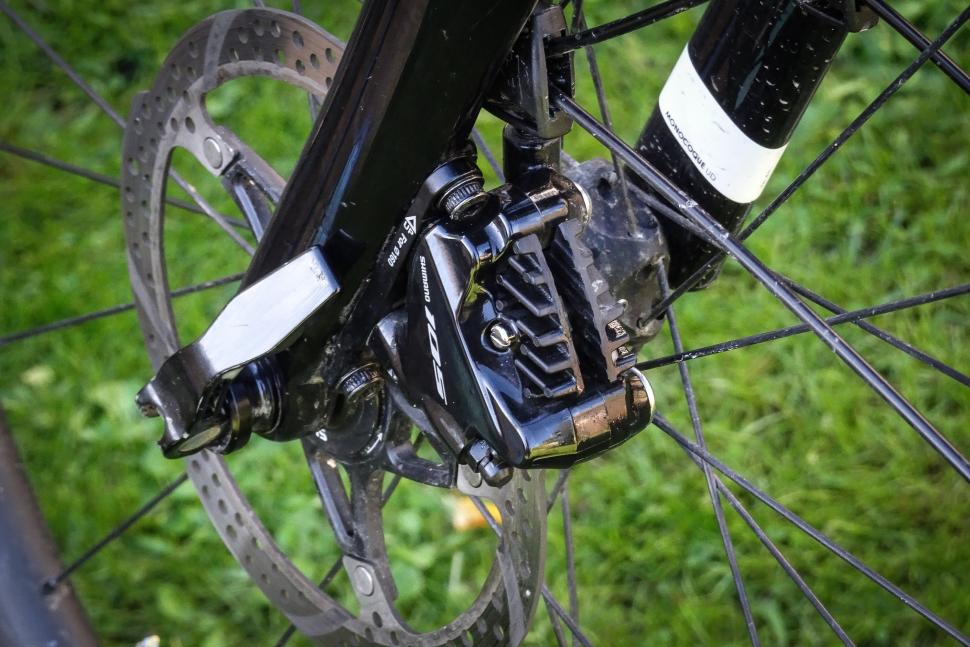
Read Everything You Need To Know About Disc Brakes
The weight difference isn't huge but it can often be around a pound over the whole bike when everything is taken into account.
2 Disc brake rub can be an issue
Early disc-equipped bikes borrowed the 74mm post mount standard from mountain bikes, where the brake calliper is simply bolted directly onto the frame or fork and adapters are used to accommodate different rotor sizes.
To try and improve the appearance of discs on road bikes, Shimano introduced its flat mount system. It’s an open standard that has been quickly adopted by other disc brake manufacturers. The vast majority of new disc brake road bikes are flat mount.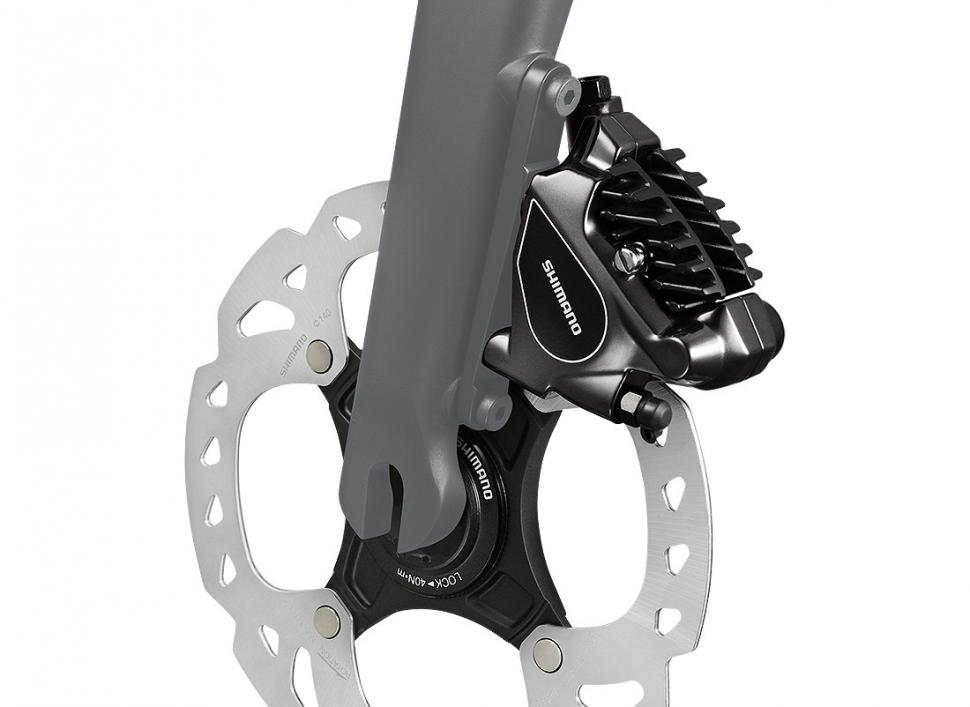
“[Flat mount offers a] smaller and more compact interface with the frame/fork for improved integration, reduced weight and better tool access for easier adjustment,” Shimano told road.cc.
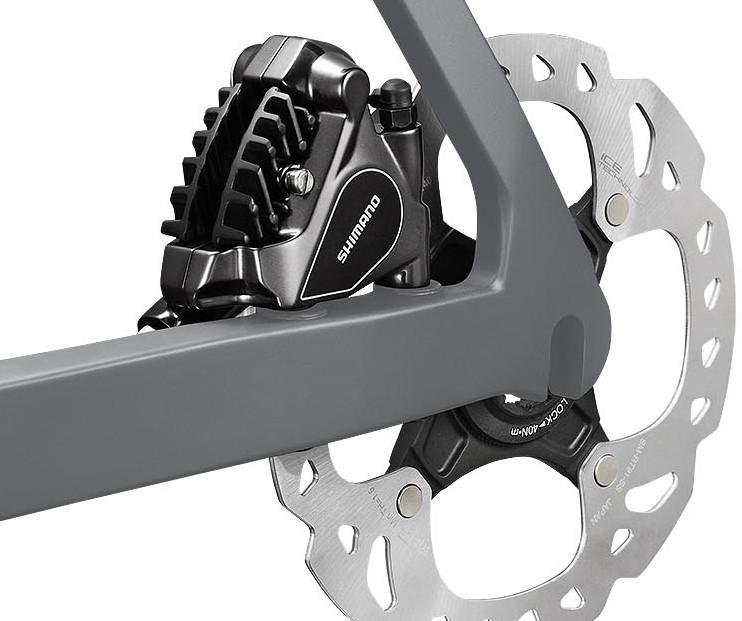
There’s no doubt flat mount disc callipers are smaller, better looking and lighter than the bulkier post mount callipers. The actual calliper mechanism is identical and there are no changes to the way the hose connects and the brake pads are installed. The key difference is in the way the calliper is mounted to the frame.
Where post mount callipers are bolted from above directly into the frame and fork, flat mount callipers sit flush with the frame and fork and the bolts are threaded in from below and directly into the calliper, pulling it down onto the frame. At the front, the calliper is fixed to a thin adapter which is bolted to the fork.
Depending on frame design and disc rotor size, post mount often needs a large and ugly adapter to provide the correct spacing over the rotor. On mountain bikes with many different frame designs and more rotor sizes in use, that versatility is a good thing, but the road market leans towards just 140mm and 160mm rotor sizes, for which flat mount has been designed.
We’ve had mostly good experiences with flat mount on the disc-equipped bikes we’ve tested, but there have been a couple of incidents of brake rub, and there's nothing more annoying.
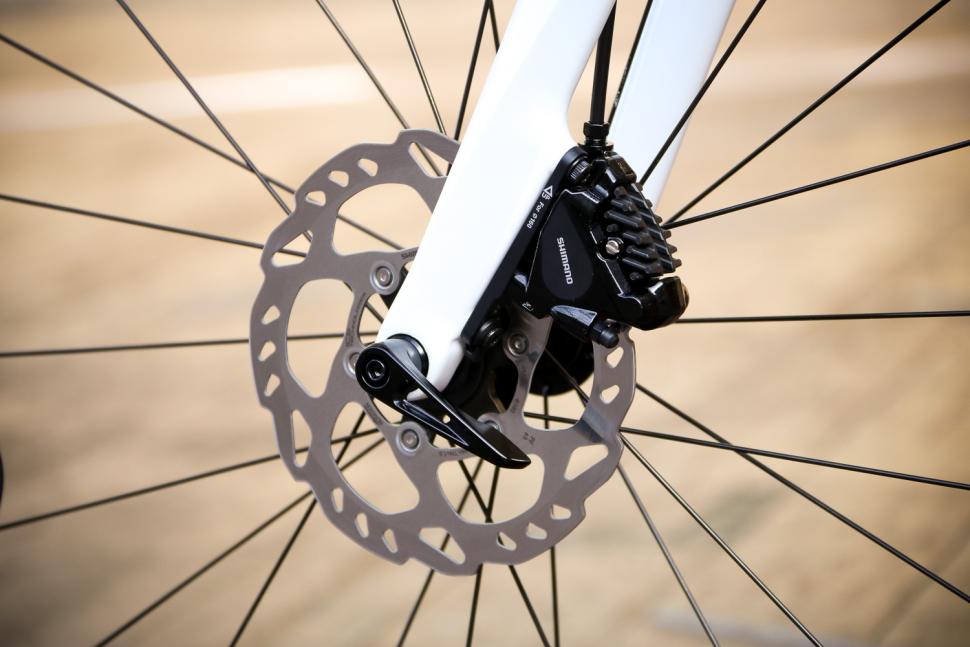
We asked Shimano about this problem and it told us that cleanly faced mounts are very important.
“As with post mount, a plane contact area (facing) always helps, as does the size of the disc (smaller is better). Centerlock rotors on good stable axle bearings (compared to 6-bolt rotors on lightweight hub axles) also help with alignment. The construction of the fork is also important (stiffness balance left/right),” said Shimano.
You'd hope a frame or fork manufacturer would make sure that the contact area was right, but in our experience this isn’t always the case.
Facing tools ensure the brake mounts on the frame and fork are smooth and level and provide perfect alignment. They're expensive and not really suitable for most home mechanics, although all good bike shops should be able to help you out here. Park Took does an adapter for its DT-5.2 Disc Brake Mount Facing Set and you can see it in action in this video.
The other solution to disc brake rub is to adjust the calliper on the frame/fork. With post mount it’s relatively easy: just slacken off the bolts, pull the brake lever and tighten the bolts to centre the calliper over the rotor.
“The range of adjustment for flat mount is the same as for post mount," says Shimano. "The difference is that the side-to-side adjustment is no longer on the calliper but in the slot hole instead. Shimano recommends that this hole is 4 x 5.2mm (+/- 0.1mm) but sometimes manufacturers don’t follow these recommendations. For the front calliper the adjustment is in the adaptor plate with the same hole dimensions.”
Not all manufacturers are adhering to the requirements as closely as they should. In many cases, the flat mount range of adjustment appears to be less than in post mount systems. We like flat mount but it does mean you are at the mercy of bike companies ensuring the mounts are manufactured correctly.
3 Disc brakes affect aerodynamics
Like any other external component, disc brakes affect aerodynamics. Some manufacturers have stated that the rim brake version of a particular bike is more aerodynamically efficient than the disc brake model, but it's not as simple as saying that rim brakes are always more aero.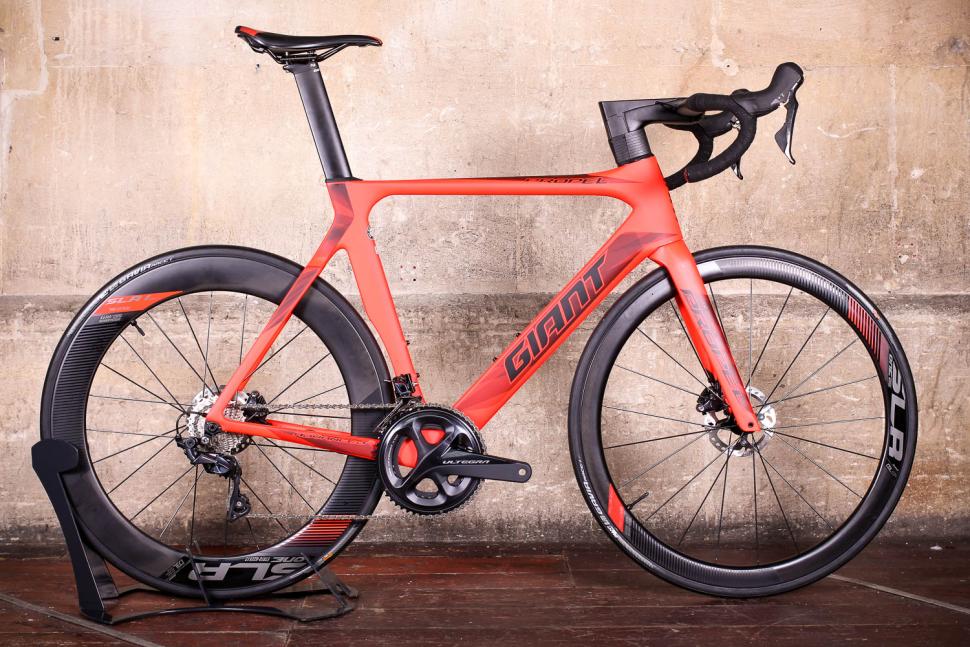
When Giant revealed its Propel Disc in 2017, for example, it said, "Engineers found that, with proper integration, a disc-brake design can actually improve aero performance compared to rim-brake configurations.
“This is because the location of traditional callipers (either in front or behind the fork crown/ legs) creates 'dirty' air'. Opening up the fork crown area (by placing the disc-brake callipers down at the hub) means that the air hitting the new disc-brake calliper has already been disrupted by the leading edge of the tyre/wheel. This effect is further enhanced by an asymmetric fork that helps smooth out airflow over the calliper.”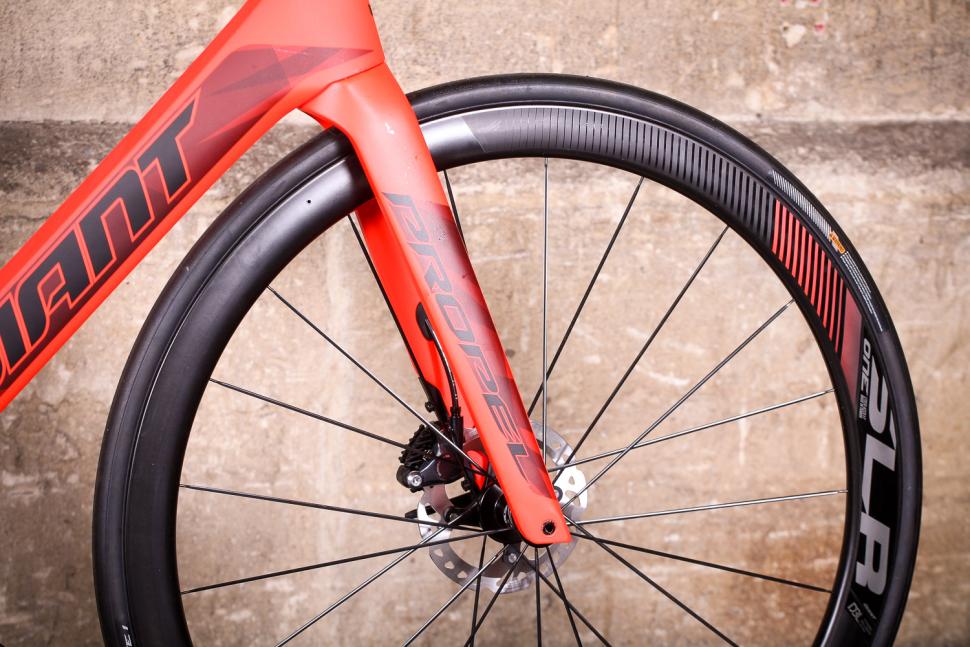
A handful of new aero road bikes, like the Cannondale SystemSix and 2019 Specialized Venge, are disc brake-only.
4 Choosing pads is a minefield
Switch to a disc brake bike and you'll eventually have to choose new pads... and that's a minefield.
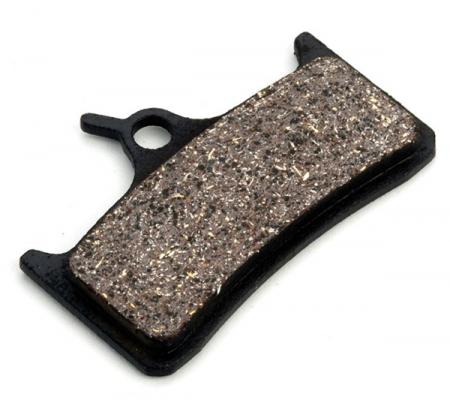
All pads are made by mixing various powdered additives with a binding agent and then squashing it all together at high heat and pressure to form a solid block on the backing pad. What's in the mix of powders has a major effect on the pad's properties.
Most new bikes come fitted with resin pads. They're made from non-metallic additives such as rubber, glass, carbon and Kevlar to provide an all-around pad that works for most people but isn't very durable under hard use.
Find out more about disc brake pads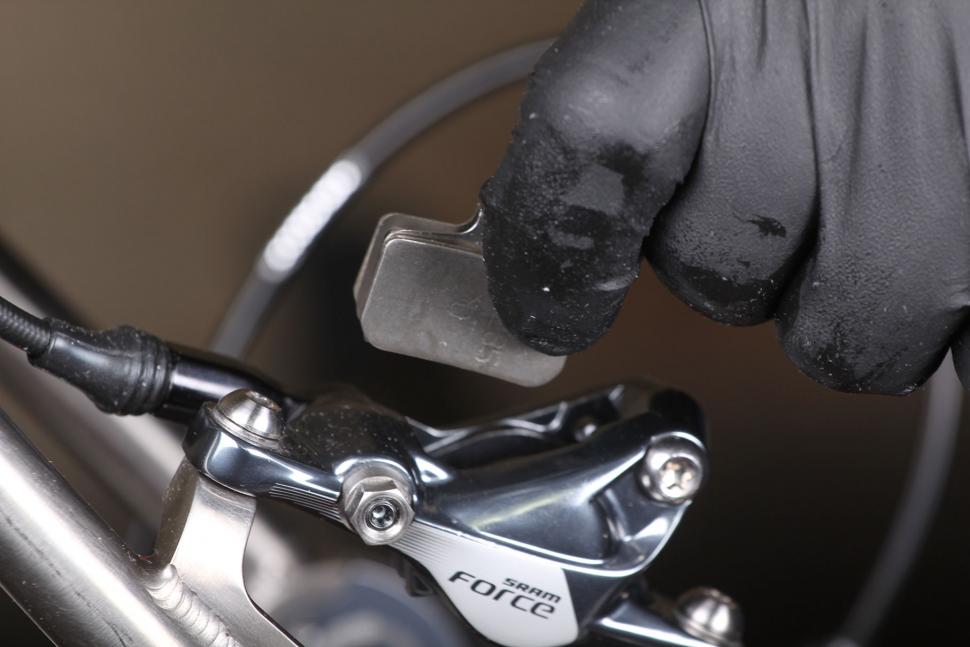
If you live anywhere hilly and/or ride in all weathers then you're probably better off switching to more expensive but much longer lasting sintered pads. Also known as metallic brake pads, these use a very high proportion of metallic fillers such as copper, steel and iron. They provide strong, effective braking at high pad temperatures although their bite can be poor when they're cold and they'll wear out your rotors quicker than resin pads.
5 You need to bed in new brakes
New disc brake pads and rotors don't immediately perform to their full potential – they need bedding in first. This is a process that distributes pad material over the rotor to increase the friction, and maximises the contact area between the two surfaces.
Here's how to look after disc brakes to get the best performance out of them
Thankfully, bedding in is pretty straightforward. Here's SRAM's advice:
"Accelerate the bike to a moderate speed and then firmly apply the brakes until you are at walking speed. Repeat this process 20 times. Then accelerate the bike to a faster speed and apply the brakes until you are at walking speed. Repeat this process 10 times. It’s important that during this process you never come to a complete stop or lock up the wheels at any point."
This will improve the performance of your brakes massively and prepare them for normal riding.
6 Maintenance involves a new set of skills
Chances are that you know how to adjust rim brakes and swap the pads, and probably how to change the cables too. You might have been doing it since you were a kid. Depending on your cycling background, disc brake maintenance might be entirely new to you.
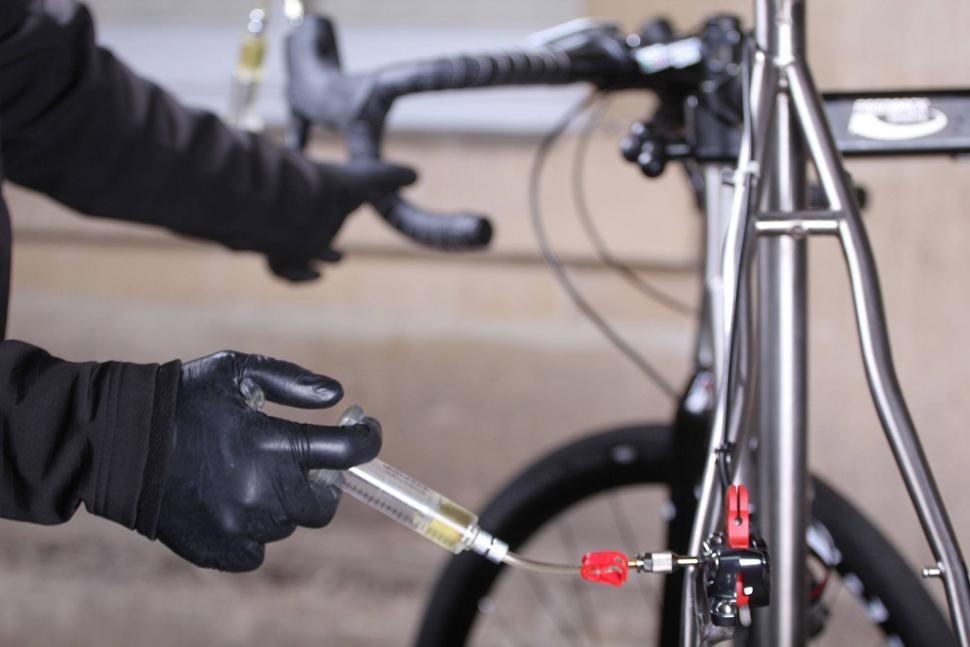 One issue you could encounter with hydraulic disc brakes is a soft and mushy feel because of air in the system. This requires bleeding and means either a trip to a bike shop or shelling out on a bleed kit. Each manufacturer has its own bleed kit. Shimano and SRAM, for example, use different techniques and fluid.
One issue you could encounter with hydraulic disc brakes is a soft and mushy feel because of air in the system. This requires bleeding and means either a trip to a bike shop or shelling out on a bleed kit. Each manufacturer has its own bleed kit. Shimano and SRAM, for example, use different techniques and fluid.
Bleeding a hydraulic disc brake system isn't the most onerous of tasks but you will need to get the hang of it while following a guide or watching one of our videos.
7 They can squeal!
It's true that rim brakes can squeal but we reckon that disc brakes are worse offenders.
The most common cause of disc brakes squealing is contamination of the rotor or pads. You have to be careful when using spray lubricants on a bicycle with disc brakes, or avoid them altogether.
Find out how to stop your brakes squealing
“Cleaning your rotors regularly with a specific (oil-free) disc brake degreaser is a good way to avoid squealing brakes," says Shimano. "Cleaning your pads too can help quieten things down — you can try some sandpaper or grinding the pads — but if the grease has soaked through the pad, you might need to replace them. Don't use a degreaser or chemicals on brake pads, though.”
It’s harder to clean disc brake pads than rim brake pads, largely because you have to remove them from the bike in the first place.
What's the best way to clean disc brakes?
Squealing pads can also be a sign that the pads are worn out. It's a little more tricky to take a close look at disc brake pads than it is with rim brake pads, although taking the wheel out can make the task easier.
8 Rotors wear out... eventually
One of the advantages of disc brakes is that they don't wear out the rims of your posh carbon wheels, but don't forget that you will wear out the disc rotors. Thankfully, rotors aren't particularly expensive.
Different brands give different minimum thicknesses for their rotors (the figure is often printed on the rotors). Go beyond that limit and things become dangerous, so keep an eye on 'em.
Mat has been in cycling media since 1996, on titles including BikeRadar, Total Bike, Total Mountain Bike, What Mountain Bike and Mountain Biking UK, and he has been editor of 220 Triathlon and Cycling Plus. Mat has been road.cc technical editor for over a decade, testing bikes, fettling the latest kit, and trying out the most up-to-the-minute clothing. He has won his category in Ironman UK 70.3 and finished on the podium in both marathons he has run. Mat is a Cambridge graduate who did a post-grad in magazine journalism, and he is a winner of the Cycling Media Award for Specialist Online Writer. Now over 50, he's riding road and gravel bikes most days for fun and fitness rather than training for competitions.
Latest Comments
- Rendel Harris 4 min 5 sec ago
Well you are a bit odd because most people do gravel rides on gravel. How many times do you ride over those items in a four hour session?
- bensynnock 5 min 58 sec ago
I see a car go through a red light at almost every single cycle at every single junction. ...
- eburtthebike 12 min 42 sec ago
And demanding that the real issue, lack of safe cycling infrastructure is addressed immediately, not blaming the victim.
- chrisonabike 1 hour 4 min ago
Also don't forget - Sustrans are a charity *....
- chrisonabike 1 hour 16 min ago
Yes ... but (just due to the large numbers of people affected) this likely would only proceed in the UK at a very ... cautious ... pace....
- EK Spinner 1 hour 33 min ago
Arsehole in the van not with standing, how did they manage to get a risk assessment allowing a race (a group not a TT) group to be competing on ...
- RafaDy 1 hour 28 min ago
I think reviewer completely missed the point here trying to match bike's name with what it can do. Ribble is namin git's bike weirdly, the...
- Moist von Lipwig 4 hours 54 min ago
Bit of googling gone wrong in the article - the JAT is the Junction Assessment Tool, the Joint Approval Team appears to be a coutner terrorism...
- HKR 6 hours 9 min ago
Can't believe that child threw his bike on the floor at the end of that. Young people today have no respect... ;))
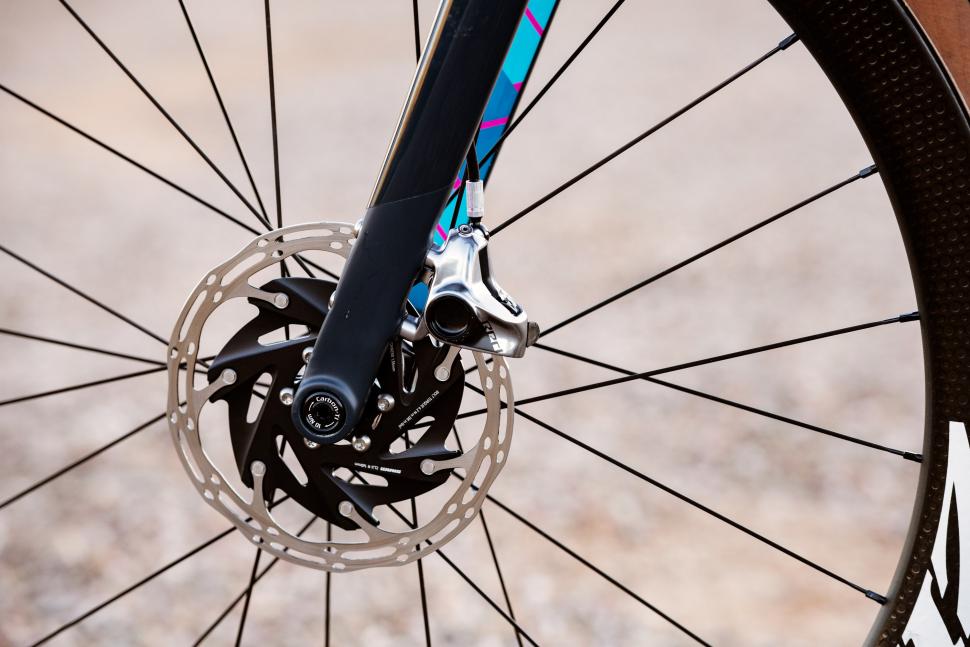
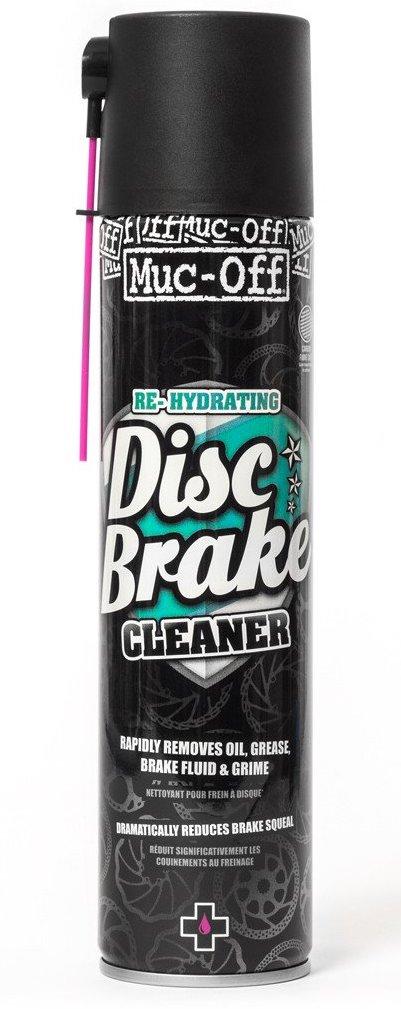
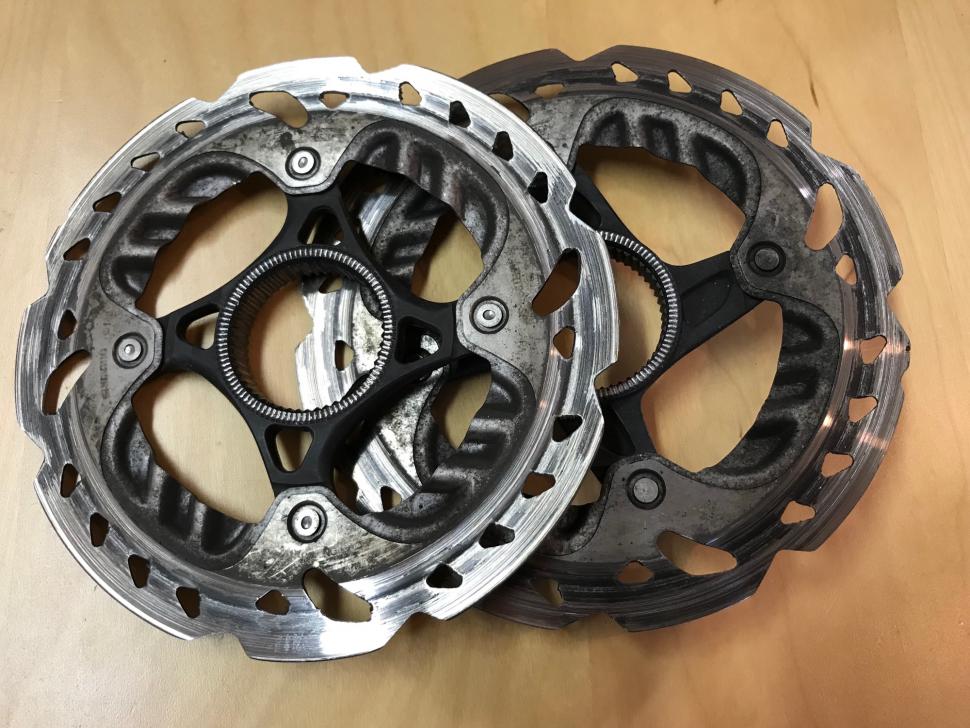
Add new comment
206 comments
Original article from 2014 and the arguments are still the same, though the subject is now so past its best that they are heading towards delightfully retro.
People who have disk brakes mostly get on with them, people who don't like them, even if they have never tried them, are not being forced to change their current bicycle and even have options for buying new with rim brakes.
I bemoan the weight of 6 more spokes on disc. What a pain. Really 75 grams. Awful penalty
This I can't argue with, and the bikes look better to boot, even though there are more attractive options than waveydavey has referenced.
However we live in a country where it rains a lot of the time, and often unpredictably. While some claim rim brakes are as good in the wet as discs that is certainly not my experience, and is even less true with carbon rims.
The fact that some luddites argue bikes with disc brakes and bikes with rim brakes shouldn't mix on safety grounds shows that even disc-phobes accept the braking is superior.
Since when are most rides that people participate in full gas "in the red efforts" where the aim is to be the fastest? 99% of the time it's the rider not the bike. You've created a strawman specifically to have a rant about what the marketing depts of the bike industry thrust upon us.
BTBS
My point of mentioning what I have with respect to the frame is that there are frames still out there to be had that don't need discs, can and do take wider tyres than many so called 'gravel' bikes AND importantly can take standard racks and guards so are multi function without the need for speciality accessories that readers here have mentioned frequently when trying to get bits to fit/work on 'modern' disc frames.
I'm trying to get to a bike with wider tyres and rim brakes, like a J.Ack. Can you tell me which caliper brakes work over wider tyres operated from a drop bar? Or is it back to cantis or v-brakes?
Thanks for any help.
For the majority of cyclists it's all academic and they don't care as long as they stop... I don't ever remember my Deore cantilever brakes being that bad on my early 90's mountain bike...I thought v brakes were too grabby and lacked modulation when they came in...I now have Shimano (cable - shock horror!) discs on my bike - they're absolutely fine for the varied range of riding I do amd I don't have a clue what size the rotors are! I think people are all too content to follow the line that x is better or worse than y - but not always based on direct experience...
Why do disc brakes have rotors? What does the word 'disc' refer to? Surely disc brakes would have brake discs and brake calipers, so if the rotating surface is called a rotor, surely they should be called rotor brakes, which would have brake rotors and brake calipers?
Sad to say, I think the car world has it right. In the day when I had a car with disc brakes, as part of an upgrade I swapped out the standard part for some cross-drilled brake discs.
Hit me with your put-downs...
This thread just gets better!
.. and where did 'seatbelts' come from?
I just feel sorry for anyone 'new' coming on here looking for some genuine impartial advice and guidance!!
Having been on trips to Tenerife, with the long fast descents, I've only heard the riders with carbon wheels worry about the braking performance in the dry. The alloy rim and disc brake riders are happy, until it gets wet then disc brake riders are the only ones happy.
Looking for a new bike it seems I have to have disc brakes if I want wider tyres. In looking into the arguments for and against ( on top of everything in this thread) I thought this article was interesting.
https://www.honeybikes.com/blog/2018/3/25/disc-brake-vs-rim-brake-perfor...
Kinesis CX1 will take rim brakes, wide tyres and fits the bill for gravel/CX.
Kinesis 4Seasons also takes long drop brakes and would fit a 30mm wide tyre.
Van Nicholas Amazon CX or touring would take rim brakes and decent width tyres but is pricey!
Gunnar Crosshairs is like a steel version of the CX1, would love one but don't really buy into steel for steel's sake any more and would probably be the wrong side of £1500 by the time you got it imported from the states.
Various CX frames still out there but they all err on the racier side of geometry.
As for me I'm just accepting the inevitable and trying to grow to love disc brakes with half an eye on the new Giant Revolt bikes. Am waiting for some wet weather (strange thing to say in Scotland) to try the latest hydraulics out on my commuter, but fully expect them to be just as noisy as the previous three sets...
If I can put my two penneth in. How I see it is if you want to have the ultimate setup, run carbon rims, use discs. If you are an average rider (like most of us actually are, besides what many want to believe) then good alloy wheels with rim brakes are actually more than capable. But hell, who gives a sh*# what anyone else is using as long as what you have works well enough for you. There’s certainly no point in arguing amongst ourselves about it. There is no right or wrong answer.
Such a shame that these rim/disc threads always talk about braking. Its NEVER been about braking. Both systems stop bikes really well when correctly set up. No, disc brakes are all about wheels and tyres. The ability to design wide aero rims of any material, beyond the limitations of the rim brake and it's parallel braking tracks.
Such a shame that these rim/disc threads always talk about braking. Its NEVER been about braking. Both systems stop bikes really well when correctly set up. No, disc brakes are all about wheels and tyres. The ability to design wide aero rims of any material, beyond the limitations of the rim brake and it's parallel braking tracks.
Such a shame that these rim/disc threads always talk about braking. Its NEVER been about braking. Both systems stop bikes really well when correctly set up. No, disc brakes are all about wheels and tyres. The ability to design wide aero rims of any material, beyond the limitations of the rim brake and it's parallel braking tracks.
And here it is, article regurgitated again so the inevitable furthering of the rim vs disc argument.
Have what you want, but please stop the bullshit claims. Disc rotors last forever (a bloody long time at least!) and disc pads wear out - depending on matrix, some quicker than others. That’s the way you want it to be because pads are cheap, especially aftermarket such as Uberbike.
Cable disc operated brakes are variable in performance and require much more maintenance to keep them at their optimal. Hydraulic discs perform very well and once set up correctly are pretty much maintenance free apart from changing out warn pads and the occasional re-align, usually after said pad replacement.
Brake squeal with discs is usually caused by either contaminated pads, miss aligned calipers or very moist air on a cool day. I’ve got three disc equipped bikes and squeal is almost non existent.
You can overheat a disc brake with heavy/ constant braking. But it’s all a matter of mathematics and thermo dynamics. I prefer the look of 140mm discs on a road bike but found I cooked a six bolt mounted disc, using correct braking technique (hard and short to scrub speed before a bend, then off to turn and then continue the descent). The disc actually dished itself due to the heat. I got home after adjusting the caliper and not using the brake on the trip home.
After that I fitted centrelock Dura Ace Freeza discs which drop the temperature by about 100 degrees C. Problem solved. If I ever went to somewhere like the Alps or Pyrenees I would fit a 160mm to the front. Horses for courses.
The braking with discs cannot be faulted. I can brake harder and later with minimal effort, in the dry or in the wet. That is undeniable. I can get full braking from the hoods with just a finger or two. From the drops I don’t need any more than one finger to get full braking effort. Braking is instantaneous and strong and I can modulate it better. Fact. Better than rim brakes, of which I have 30+ years experience including Dura Ace and Super Record.
So, on to some of the other ‘points’ that have been brought up in this and other threads.
Rotor rub. Only occurs if the rotor is not straight, the caliper is not correctly adjusted or the caliper mounts aren’t perfect. Just like any other parts, if they are not fitted/ set-up correctly they won’t work properly. Solution? Set them up correctly. This includes pushing the pads back out before bleeding them so that they sit in the correct position when ‘off’.
More complex maintenance. Not really, just different. Setting the caliper using one Allen key and two bolts is easy. Bleeding the system with the correct tools is again pretty easy - just like anything else, if you don’t know how to do it you will probably cock it up and they won’t work. Solution? Use the correct tools and learn how to bleed brakes properly. Even setting them up from scratch including cutting hoses, fitting olives and routing hoses is not really very hard, you just have to learn how to do it! So, regarding complexity for the average ‘user’ who has a bike with it all set up from the get go, well, maintenance is actually simple and no more complex than cable operated caliper brakes (fitting or changing pads, toeing them in, aligning them properly with the rim, adjusting the cable length to allow the correct free stroke and biting point etc etc). Plus of course as the pads wear down with a rim brake the lever pull will get closer and closer to the handlebar. With disc pad wear the caliper automatically adjusts for the wear.
Not necessary. Indesputable. Disc brakes are NOT necessary. Neither are electronic gears, 11 speeds (or even 12 speeds!) carbon frames, handbuilt wheels, ceramic bearings, aero handlebars, Garmin (or any other brand GPS’s) etc etc etc. This however, is not an argument against them. It just means that they aren’t necessary. End of. It does not mean they aren’t better, especially in marginal conditions etc etc. Saying tha roadies don’t ride when it rains, they go on their turbo, therefore this ‘benefit’ of discs is negated, is complete bollox. I ride my winter bike with disc brakes and full guards if I go out in the rain, or anticipate lots of rain during a ride, no matter what season it is. However, I have often been caught out in rainfall whilst out on my summer bike(s). My summer bikes get ridden in the rain. I would rather do that than sit on a turbo which is mind numbing.
Rim wear vs rotor wear. Rim brakes wear the rims of the respective wheel. Undeniable fact. Disc brakes wear the disc rotor. Undeniable fact. The rims of disc braked bikes get no wear from braking. Undeniable fact. Therefore, if you have expensive wheels, with expensive rims, rim brakes are going to shorten the life of these rims and they will need replacing when they reach their wear limit. This is even worse if you have clincher rims, which most roadies do as the braking surface is structurally integral to holding the tyre and its inflated pressure in. Fact.
Rotors last absolutely ages, especially if you change the pads before one wears out completely and causes ‘metal on metal’ contact and a horrible noise on braking. So, sure you can get cheap rotors, just as you can get cheap rims (aluminium), but factor in the cost of changing a rim, possibly the spokes as well and getting the wheel rebuilt and that starts to add up. All of a sudden those cheap aluminium rims don’t look such a bargain when it comes to ongoing maintenance. And if you ride a lot in the wet and crap this will come round more often as grit, grime and aluminium shards grind away your aluminium rims in winter/ wet conditions. Cables will periodically need replacing as they corrode/ gum up/ fray etc. Hydraulic hoses will only really need changing if they get damaged as they don’t really degrade in the same way.
Aerodynamics and weight. Firstly, how much difference do you really think either of those make to your average roadie who rides, stops at junctions and waits for his mates (or catches them up), has a cafe stop, could lose a few kilograms off his midriff etc? It’s negligible. Sure a complete disc brake package weights a bit more than a rim brake setup, but seriously, enough to make a discernible difference? And aerodynamics? Really? As part of a full on aero package maybe there is a call for rim over disc brakes, but to the average roadie? Nah, bollox. It’s indiscernible.
Looks. Beauty is in the eye of the beholder. Some think a road bike should look traditional with rim brakes. Fine, good for them. Others care more for function over form. Fine. And others think disc brakes look better! Fine. Whatever. Still not really an argument against the technology. Have what you want. It’s like the pathetic argument that an Italian bike must have Campagnolo. FFS, it’s just someone’s opinion. Have what the hell you want and fcuk what anyone else thinks!
Functionality. Some have commented about RS785 calipers leaking, which I’ve read before. I’ve had them on a bike for 4 years and never had an issue. Other have. So what? Some bits (not just brakes) aren’t perfect and some are better and more reliable than others. Fact. Doesn’t mean disc brakes are shit, or a faff, or less reliable. Flat mount has become the standard, post mount will gradually decline. If your RS785 calipers need replacing and you can’t find any on the market, simply fit a Shimano MTB post mount caliper such as Deore. They all work with road levers.
So, are rim brakes dead? No of course not. Horses for courses. Those who prefer them can have what they want, but the willy waving coming out with tripe about how they are better, how discs aren’t necessary, how people don’t ride carbon rims with rim brakes if it’s raining etc etc is all bollox. It’s all excuses for not wanting to accept that there is a better technology available now for road bikes. Just accept it and also be happy riding on your rim brakes and adjusting your riding style/ speed appropriately, we are all happy for you, but please, stop trying to denigrate road disc which is here to stay whether you like it or not. Embrace it, or don’t, others don’t care, but please, stop sprouting shite about it.
PP
I find it dificult to accept that discs are necessary, I don’t buy into the must have the latest tech, making cycling more expensive every time you upgrade. Pro racers don’t have to worry about the cost as the teams provide the bikes and new tech. I’ll stick to rim brakes on my road bikes. I do have discs front and back on my Kawasaki. I reverse bleed these every year when replacing DOT 5 brake fluid. Disc brakes are great for motorbikes.
My custom Guru sub 4 kilos my cervelo is just about there as well “depending on the wheels I use . Simple brake cabling. ( powercordz) one chain ring 53 t and a red 10 speed ( tuned out for light weight ) rear mech . No fuss easy peasy .both frames are naked carbon i mean naked no clear coat just aero 303 for protection so no need to worry about scratches ,nothing to scratch .
Disk brakes aero frames electronic shifting ,over complicated cables , batteries computers and plugged into the fucking matrix , ugly fucking frames that are painted like clowns ride them and riders who were team kit and special clothes that cost the earth and look ridiculous and think they are in sky or whatever they call themselves and check there gps navigation system to get a cup of coffee and spend two hours preparing them selves for a ride on a “fucking bike”
i wear a tech shirt a pair of mbt shorts , bonts on my feet. and a small bum bag I got at John Lewis and it’s small I can tell you for spare inner tube ( continental supersonic folds up tiny ) Allen key tool. credit card and mini pump and it’s mini I can tell you and phone sometimes , that’s it I’m ready and out the door .
This set up I’ve used all over the world no problems . Life is has hard as you make it .
So, I'm all for disks. But facts are facts. And in my case, I wore out my disk brake rotors after about 3,000kms. I'm fairly heavy (~100kg) and I was doing a lot of elevation (about 100,000m worth in those 3,000kms), with some long, fast, at times rainy descents. But they were 180/160mmm Shimano SLX rotors, and I was using the bike almost exclusively on the road. And I was changing my (ceramic) pads every ~700-800kms. Meanwhile, my rim brake pads lasted around those same ~3,000kms on the same roads if usually slightly better kilometers. And the XT finned pads cost as much as the Swisstops.
On the flip side, disk brake wheels should last virtually forever, and rotors aren't all that expensive next to nice wheels. But that's a much longer-term saving.
Substitute 'moist air on a cool day' with 'riding whenever it's wet and not braking much' and you're pretty much spot on.
It should be up to the manufactures to develop a system that doesn't make so much noise in the wet rather than the consumer having to try all sorts of aftermarket stuff or adapting their riding to suit the brakes (I've been advised I should be pulling some hard stops on steep hills to heat up the brakes and burn off any contaminants, but my commute is too flat for that so I've just bought a blowtorch instead, can give the pads a good toasting whenever I remember, add that to the list of disc brake maintenance!).
Disc brakes all day long, what a load of rubbish this article is.
In my experience the worst thing about discs is the noise, and all the maintenance that entails. They can squeal like pigs, especially in the wet, and you need to be a master of the black arts to silence them.
Re Brake Rub - why are brand new rotors never flat/true. New rotors = 30 minutes with a rotor tool. I suppose the extra clearance on a MTB means an untrue rotor is less of an issue.
Re Brake Rub - why are brand new rotors never flat/true. New rotors = 30 minutes with a rotor tool. I suppose the extra clearance on a MTB means an untrue rotor is less of an issue.
Re Brake Rub - why are brand new rotors never flat/true. New rotors = 30 minutes with a rotor tool. I suppose the extra clearance on a MTB means an untrue rotor is less of an issue.
My 6-bolt XT rotors developed a little wobble after bedding in. I did 20 or so gard almost-stops on a local hill to bed the pads in and voila! wobbly rotor.
It was only minor thankfully.
My fun but filthy commute destroyed my very precious set of 26 inch rim brake Mavic xc717 rimmed wheels in 11 months. It had been very wet and muddy, even during that summer. I had one rim left (I had brought 3 from SJS) and the mechanic at my LBS managed to find a built wheel on a german web site so had the LBS make me up a matching wheel. Thankfully the last winter was relatively dry and the new wheels survived. I have now mostly retired that wonderful bike and built up my new ultimate commuter. She has disk brakes.
The rear squeaks a bit, which I hope might end if I change the pads for sintered ones for the upcoming winter, and a clean, and maybe some copperslip. I do have true one finger braking, which has given me more control going down bumpy hills, and I can cover the brakes more because of this. My ceramic rims with xtr Vs, nokon cables and brake booster, on the front, didn't quite give me that, let alone my quality early 90s cantis.
I like them, and I can run either wide 27.5 or slightly thinner 29 inch rims and tyres if I want. And I would rather grind my disks away, which are also further away from the filth, than my aluminium rims. And have more power. I will soon have to buy lots m ore tools and learn new techniques. Yeah.
I ride mtbs as a utility cyclist, using roads, and to get to the off road bits. The disk thing was decided a long time ago for mtbs and it was just me running my retro bicycles that meant I hadn't had disks. It was when Mavic stopped making the XC717 in rim brake form that meant I to get something new. I have attempted to future proof my new one as much as possible.
Interesting discusson.
Being a 'commuter on a bicycle' I've no axe to grind here. All I care about is being able to stop, quickly and under control, in all weather conditions. So it's disk brakes for me.
Coming from a solid mechanical - motorcycles and cars - background I can't understand all these comments along the lines of "disk brakes need constant maintenance and faffing". Why? Hydraulic disk brake systems are sealed and self-adjusting. The only maintenance needed is a pad change, which, on a bicycle or motorcycle, is a ten minute job. Fluid change? Once in a blue moon when it gets dirty. And it's true the larger the disk and greater the pad surface area the more stopping power under your fingers. Why do you think sports/heavy tourer motorcycles run huge twin front disks and 4 to 6 pot calipers?
I'll give one concession to maintenance. Motorcycles ridden through several winters can have problems with piston seals forced hard against pistons causing them to seize. This happens because the (alloy) slot in which the seal sits is prone to salt corrosion which builds up over time pushing the seal outwards. It's a can't be bothered to check/lack of knowledge thing, really. I recall one motorcycle I worked on, a Triumph Tiger, that the owner was very proud of and maintained himself. This bike has twin disks and two 4-pot calipers on the front and one disk and one 2-pot caliper on the rear. Out of the 10 pots just one, on the front, was unseized and working. Oh dear.
The little plastic wedge that comes with the brakes from new usually has a little slot in it that is a no-go gauge. If it fits over the disc, it’s time to replace it. It was many years before I realised that.
Agreed, just measured mine after ~2,200 miles and the brake track is 0.04 mm (or 1.6 thou) thinner than the edge so I think I've got a many thousands of miles left on them!
Pages